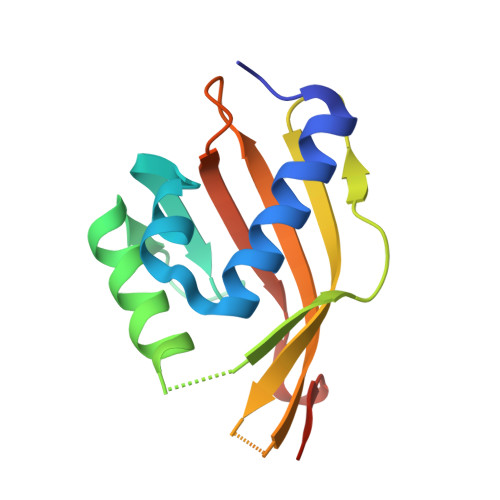Contribution of a Low-Barrier Hydrogen Bond to Catalysis is not Significant in Ketosteroid Isomerase.
Jang, D.S., Choi, G., Cha, H.J., Shin, S., Hong, B.H., Lee, H.J., Lee, H.C., Choi, K.Y.(2015) Mol Cells 38: 409
- PubMed: 25947291
- DOI: https://doi.org/10.14348/molcells.2015.2266
- Primary Citation of Related Structures:
5AI1 - PubMed Abstract:
Low-barrier hydrogen bonds (LBHBs) have been proposed to have important influences on the enormous reaction rate increases achieved by many enzymes. Δ(5)-3-ketosteroid isomerase (KSI) catalyzes the allylic isomerization of Δ(5)-3-ketosteroid to its conjugated Δ(4)-isomers at a rate that approaches the diffusion limit. Tyr14, a catalytic residue of KSI, has been hypothesized to form an LBHB with the oxyanion of a dienolate steroid intermediate generated during the catalysis. The unusual chemical shift of a proton at 16.8 ppm in the nuclear magnetic resonance spectrum has been attributed to an LBHB between Tyr14 Oη and C3-O of equilenin, an intermediate analogue, in the active site of D38N KSI. This shift in the spectrum was not observed in Y30F/Y55F/D38N and Y30F/Y55F/Y115F/D38N mutant KSIs when each mutant was complexed with equilenin, suggesting that Tyr14 could not form LBHB with the intermediate analogue in these mutant KSIs. The crystal structure of Y30F/Y55F/Y115F/D38N-equilenin complex revealed that the distance between Tyr14 Oη and C3-O of the bound steroid was within a direct hydrogen bond. The conversion of LBHB to an ordinary hydrogen bond in the mutant KSI reduced the binding affinity for the steroid inhibitors by a factor of 8.1-11. In addition, the absence of LBHB reduced the catalytic activity by only a factor of 1.7-2. These results suggest that the amount of stabilization energy of the reaction intermediate provided by LBHB is small compared with that provided by an ordinary hydrogen bond in KSI.
- Department of Life Sciences, Pohang University of Science and Technology, Pohang 790-784, Korea.
Organizational Affiliation:

















